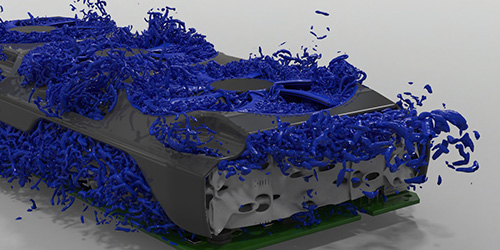Faster Geometric Model Preparation
Work with large models with low memory footprint using HyperMesh CFD's lightweight modeling capabilities. Prepare and defeature CAD and discrete models, leveraging the auto enclosure tool to automatically create watertight, high-fidelity models. Additionally, AI integration enables users to search, group, and identify parts based on tags.
Solution-Centric Case Setup
Simplify virtual wind tunnel CFD simulation setups with an intuitive graphical UI. Built-in geometry editing capabilities lets users modify and transform parts for design changes. Set up and launch CFD simulations directly within the user interface, utilizing industry-trusted Lattice-Boltzmann and Navier-Stokes-based solvers. Leverage the power of Python-based automation to programmatically set up and simulate large design of experiments (DOEs), maximizing efficiency and streamlining workflows from start to finish.
High-Performance, Interactive Post-Processing
Gain in-depth insights with HyperMesh CFD's comprehensive, high-performance post-processing toolset. Easily generate slice planes, streamlines, iso surfaces, and contours based on result fields. Users can also utilize tools to create computational fields through expressions and calculate statistical quantities. Acoustic analysis and identification features round out the toolset, providing a complete post-processing environment.
Automated Report Generation
Streamline report generation with an automated tool. Users can generate comprehensive reports detailing geometry, contours, iso surfaces, slice planes, and animations with specified views based on a defined template.
Design Exploration Workflow with AI Integration
Accelerate design exploration with a dedicated workflow. Engineers can explore design possibilities efficiently by morphing models or updating CAD parameters to derive new designs and submit DOE studies. Powered by AI, the ability to search, group, and classify parts, as well as predict results using previously trained models, significantly accelerates the design optimization process.







